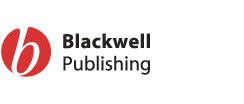- View more resources from this publisher
 Basil Blackwell
Basil Blackwell
Sources of Mathematical Discovery
This resource, published at a time when teachers had become aware of the tremendous need for motivational topics in mathematics, gives students an appreciation of, and insight into, mathematics and helps adopt an experimental attitude to the teaching and learning of the subject. The book contains ten units.
A Hint of Magic: explores a variety of magic squares, anti magic squares, magic stars, magic triangles, magic circles and a variety of number games.
Topology the Mathematics of Distortion: considers Euler's formula, topological invarients, networks, knots, the Mobius strip, map colouring and other puzzles and teasers.
Pastimes: investigates the path of a ball on a billiards table, betting on racehorsing, the construction of dice and dominoes and the movement of chess pieces.
Pascal’s Triangle: looks at the construction of, and number patterns contained in, Pascal's triangle, the use of Pascal's traingle in probability and coin tossing.
Fibonacci Numbers: explores Fibonnaci sequences, where they occur and how they can be used.
Polyominoes: investigates activities using dominoes, tetrominoes, pentominoes, polyhexes, polyiamonds, MacMahon's colour triangles and the game of trominoes .
Tessellations – mathematical mosaics: explores irregular tessellations, tessellating polyominoids and rep-tiles.
Number Relationships: investigates a variety of number patterns, palindromes, the golden number, the golden section and the golden rectangle.
Mathematics in nature: investigates a variety of spirals, symmetry, polygons, solids, sequences and triangles.
Mathematics in Art: considers ancient art, renaissance art , perspective, curves of pursuit and the art of M. C. Escher.
Sources of Mathematical Discovery is written by Lorraine Mottershead.
Show health and safety information
Please be aware that resources have been published on the website in the form that they were originally supplied. This means that procedures reflect general practice and standards applicable at the time resources were produced and cannot be assumed to be acceptable today. Website users are fully responsible for ensuring that any activity, including practical work, which they carry out is in accordance with current regulations related to health and safety and that an appropriate risk assessment has been carried out.
Downloads
-
Sources of mathematical discovery 22.63 MB




